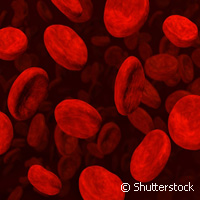Severe sepsis: when free haem runs wild
Research into the mechanisms involved in severe sepsis has concluded that free haem - a component of haemoglobin containing iron and other atoms - plays a key role in the progression of the disease. The research also unveiled the therapeutic potential of a naturally occurring haem-scavenging molecule. The findings were published in the journal 'Science Translational Medicine' on 29 September 2010. The research, sponsored by American, Brazilian and Portuguese organisations, was also partly funded by the Xenome ('Engineering of the porcine genome for xenotransplantation studies in primates: a step towards clinical application') project and by the Gasmalaria ('Crosstalk between nitric and carbon monoxide in suppressing the pathogenesis of cerebral malaria') project. Each benefited from EU support, under the Sixth and Seventh Framework Programme respectively. Severe sepsis is usually caused by uncontrolled physiological reactions to an infection, rather than by the infectious agent as such, and involves a sudden drop in blood pressure and progressive organ failure. It is extremely difficult to treat, and represents one of the most common causes of mortality in intensive care units. Researchers at the Instituto Gulbenkian de Ciencia in Portugal have found that free haem aggravates the damage done by the immune system's excessive reaction to the infectious agent. Haem is freed while haemoglobin is released from the red blood cells which normally enclose it, a process known as haemolysis. This process is triggered as the sepsis unfolds, and it disrupts the bond between the haemoglobin and four associated molecules: the so-called haem groups. The haem groups thus unleashed become toxic, causing cell death and organ failure. The body does, however, also produce haemopexin, a haem-sequestering protein. The researchers, led by Dr Miguel Soares, were intrigued to note a connection between the levels of this molecule and the progression of the sepsis. 'We found that as haem accumulates in the blood, the levels of a hemopexin [...] decrease, suggesting a way to control the harmful effects of free haem', says Dr Rasmus Larsen, the first author of the study. 'We started a very productive collaboration with Ann Smith (University of Missouri, USA) [who] had been working with haemopexin for many years,' he adds. 'She sent us enough of this protein that we could administer it to mice after they started developing severe sepsis. We found that when we did this, the general health status of these animals improved markedly, with the majority of them surviving the infection, as compared to the non-treated mice that died.' Cooperation with Dr Fernando Bozza of the Fundacao Oswaldo Cruz in Rio de Janeiro, Brazil, confirmed that this observation holds true for humans. Studies of intensive care patients diagnosed with septic shock revealed that those who survived the infection had greater levels of circulating haemopexin in the blood than those who succumbed to the disease. This promising lead may, eventually, inform new therapeutic approaches, and it may also have immediate practical applications. As Dr Soares and Dr Larsen point out, 'These observations suggest that haemopexin may be used as a predictor of mortality in patients developing severe sepsis: if levels are too low, we can expect a more severe outcome of the disease, and possible death.' Greater prognostic accuracy should, however, only be the beginning. 'While many drugs are efficient in killing the pathogen that triggers severe sepsis, on its own this approach is not sufficient to prevent mortality,' says Dr Soares. 'By administering haemopexin, which provides protection against organ destruction, we open the way for an alternative way to treat sepsis (aside from killing the pathogen) that may potentially save the lives of thousands of patients in intensive care units worldwide.'
Countries
Brazil, Portugal, United States



